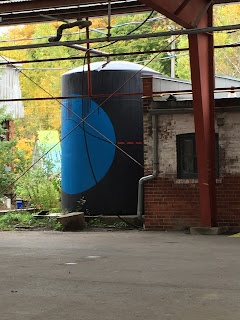After researching some sustianable materials for a project, I came across two interesting products, one was "Grasscrete" and the other was "Wool Bricks." In the last post i discussed GrassCrete, and now i will discussing Wool Bricks.
What are Wool Bricks?
- Researchers in Europe have been working together at the Schools of Architecture at the University of Seville in Spain and the University of Strathclyde in Glasgow, UK.
- They have now created a new, environmentally friendly building material that is stronger than traditional bricks and also uses less energy to make.
- These bricks are reinforced by wool and seaweed, and were developed during a push by the two universities in Europe to create more of an environmentally friendly building material that would also mechanically improve upon more traditional ones.
- These bricks are a zero-carbon product and have a leg-up in the strength department.
- They are also locally-sourced. The clay-based soils were given by brick manufacturers in Scotland, while the wool was re-purposed from local textile suppliers -- resulting in a brick that is well-suited for a cold, damp climate.
https://www.sciencedaily.com/releases/2010/10/101005085503.htm
http://inhabitat.com/researchers-develop-eco-super-bricks-made-of-wool/
http://www.treehugger.com/green-architecture/wool-seaweed-makes-sustainable-brick-stronger.html
Advantages of Wool Bricks
- "These fibres improve the strength of compressed bricks, reduce the formation of fissures and deformities as a result of contraction, reduce drying time and increase the bricks' resistance to flexion."
- The bricks can be manufactured without firing, which helps save energy. “According to the authors: ‘This is a more sustainable and healthy alternative to conventional building materials such as baked earth bricks and concrete blocks.’”
- “Untreated clay was one of the earliest building materials to be used by humankind. The oldest examples of this can be found in houses in the Near East dating from between 11,000 and 12,000 years ago. Earthy material mixed with plants and pebbles to make them stronger has also been found in certain archaeological deposits from 1400 BCE in Sardinia (Italy).”
(https://www.sciencedaily.com/releases/2010/10/101005085503.htm )
Disadvantages of Wool Bricks
- The only disadvantage that I thought of would be the expense of shipping these eco-friendly bricks across the world.
- Also, if builders do not use these bricks, it will bring the price up, and then more builders will be less likely to use them. Whereas, if more people use them, it could bring the price down substantially.
(http://www.associationofconstructionanddevelopment.org/articles/view.php?article_id=10814)
I think that Wool Bricks are definitely the brick of the future and all buildings should now be made with these strong and eco-friendly bricks.































